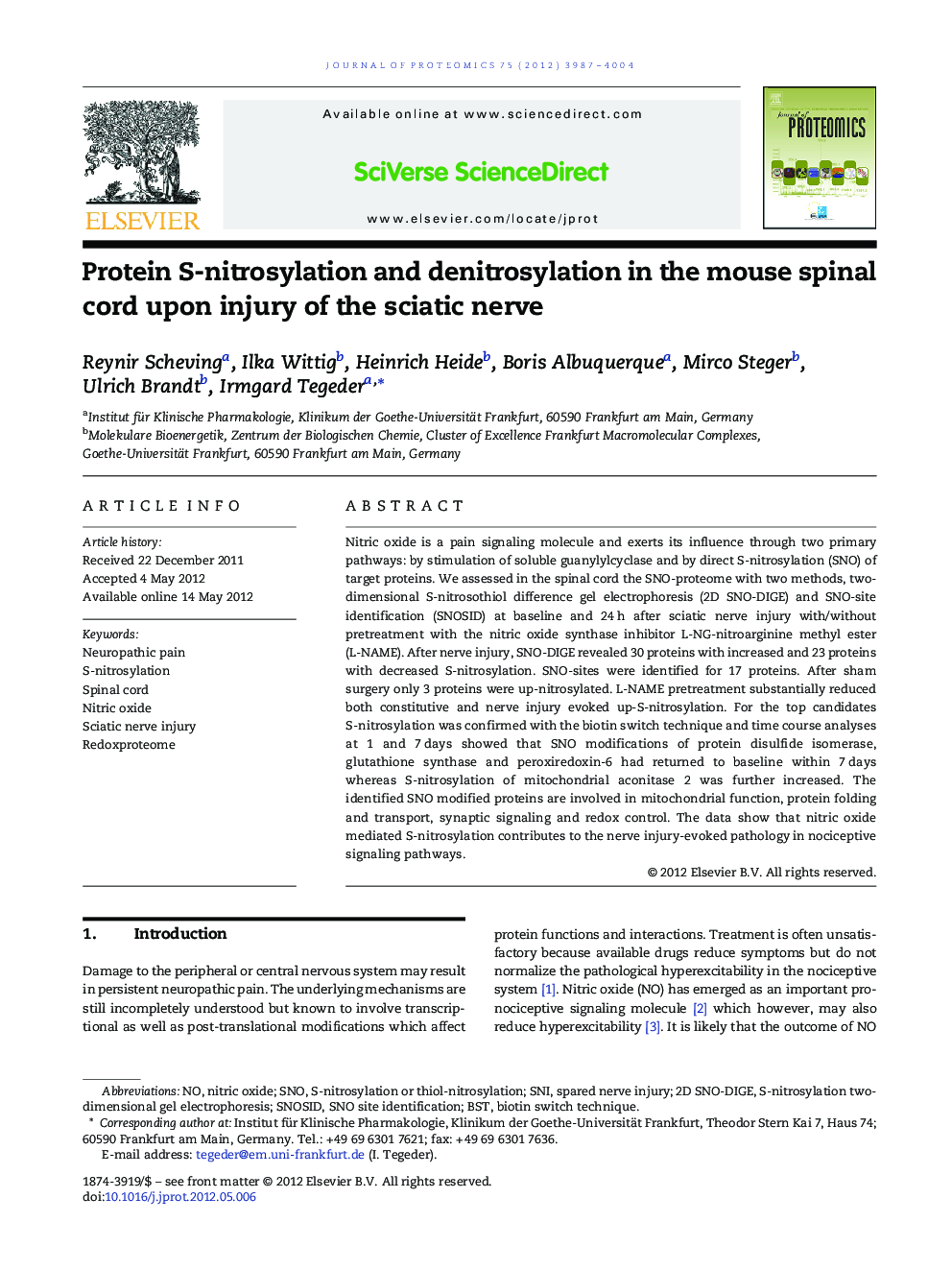| Article ID | Journal | Published Year | Pages | File Type |
|---|---|---|---|---|
| 1225833 | Journal of Proteomics | 2012 | 18 Pages |
Nitric oxide is a pain signaling molecule and exerts its influence through two primary pathways: by stimulation of soluble guanylylcyclase and by direct S-nitrosylation (SNO) of target proteins. We assessed in the spinal cord the SNO-proteome with two methods, two-dimensional S-nitrosothiol difference gel electrophoresis (2D SNO-DIGE) and SNO-site identification (SNOSID) at baseline and 24 h after sciatic nerve injury with/without pretreatment with the nitric oxide synthase inhibitor L-NG-nitroarginine methyl ester (L-NAME). After nerve injury, SNO-DIGE revealed 30 proteins with increased and 23 proteins with decreased S-nitrosylation. SNO-sites were identified for 17 proteins. After sham surgery only 3 proteins were up-nitrosylated. L-NAME pretreatment substantially reduced both constitutive and nerve injury evoked up-S-nitrosylation. For the top candidates S-nitrosylation was confirmed with the biotin switch technique and time course analyses at 1 and 7 days showed that SNO modifications of protein disulfide isomerase, glutathione synthase and peroxiredoxin-6 had returned to baseline within 7 days whereas S-nitrosylation of mitochondrial aconitase 2 was further increased. The identified SNO modified proteins are involved in mitochondrial function, protein folding and transport, synaptic signaling and redox control. The data show that nitric oxide mediated S-nitrosylation contributes to the nerve injury-evoked pathology in nociceptive signaling pathways.
Graphical abstractFigure optionsDownload full-size imageDownload high-quality image (159 K)Download as PowerPoint slideHighlights► Sciatic nerve injury causes NO mediated protein S-nitrosylation in the spinal cord. ► L-NAME treatment reduces SNO modifications and reverses hyperalgesia. ► 2D-SNO-DIGE and SNOSID reveal the SNO-proteome of the spinal cord.
